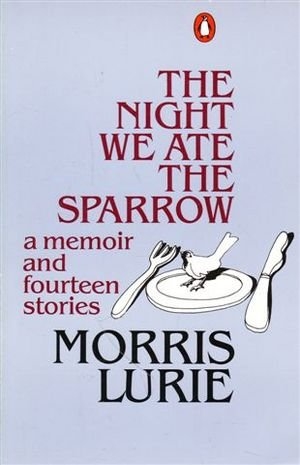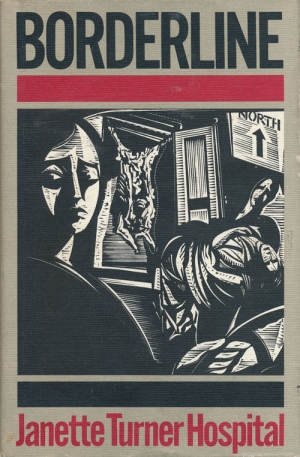Archive
It is Sunday and that is all it is. I have just read the Australian. It is not Australian. It is The Cringe. I have struggled to like Phillip Adams for years; I liked him when he was Phillip Adams – I guess he did too. He worships Mammon when he once seemed to worship cries in the street and whispers from above. No God in him.
... (read more)Penguin Books, which has just celebrated its fiftieth birthday, is widely known through its paperback publishing as the great populariser of literature in the English language.
... (read more)Jim Davidson reviews 'The Farthest North of Humanness: Letters of Percy Grainger' edited by Kay Dreyfus
Some years ago a perky little tune used to introduce Jong Amis’s programme, Talking About Music. Stravinsky, I thought, listening to the cupped trumpets. But no, the BBC had chosen a piece, by our very own Percy Grainger. Surprise number two occurred when it was announced a few years later that Benjamin Britten himself was conducting an all-Grainger programme in London’s Festival Hall. Could this be the same Percy Grainger, he of the museum built like a public lavatory, said to contain photographs of all the great composers specially endowed with Nordic blue eyes? It was. Never was the point more forcefully made than when Philip Jones, performing with his Brass Ensemble in Melbourne in 1982, stepped forward on the platform of the Concert Hall to ask, with an English solicitude for the proprieties, for permission to play a piece by Grainger to honour the centenary day of the composer’s birth. The audience was a little puzzled.
... (read more)Michael Heyward reviews 'The Cloud Passes Over' by Robert Harris
This book signals a dramatic shift in the poetry of Robert Harris. His three previous books – Localities (1973), Translations from the Albatross (1976), The Abandoned (1979) – were born out of an intense and self-propelling passion for the glitter and the glow of words, the power they have to transform reality through a kind of internal poetic combustion. This was a poetry laden with abstraction and with quasisurrealist imagery, heavily influenced by the French symbolists, by American poets like Robert Duncan, and in particular by the Australian poet Robert Adamson. Some of it stands up pretty well, though there was always the tendency for the verse to veer out of control, overblown and unfocused in the headiness of its phrasing.
... (read more)Graham Burns reviews 'The Night We Ate the Sparrow: A memoir and fourteen stories' by Morris Lurie
Welcome again to Morris Lurie’s global village: Melbourne, Paris, New York, London, Tangier, Tel Aviv, Melbourne again, London. Lurie is one of our most reliable entertainers, but he is also, in the recesses of his stories, a chronicler of inner loneliness. The round world for him is signposted with stories; as one of his characters says, ‘everything is a story, or a prelude to a story, or the aftermath of one.’ The sheer variety of narrative incidents and locales in this collection is, as usual with him, impressive in itself. His characters play hard with experience in those bright or familiar places, a Tangier of easy living and surprising acquaintances, a London of the sixties fierce with contrasts. Yet finally they are always partly detached from it all and able to set themselves free, curiously able to resume the role of spectator of life. Many of Lurie’s characters give the initially disconcerting impression of possessing that ultimate detachment of a certain kind of writer, even when, as is usually the case, they are not actually cast as a writer or artist.
... (read more)Janette Turner Hospital was born in Melbourne, but has lived and travelled abroad in recent years. Borderline, her third novel, is set for the most part in Boston and Montreal. It is a mystery story which contains many of the conventional ingredients of the genre: disappearances, murder and violence, mysterious messages. However, these things are subsidiary to its dominating theme which is an exploration of the nature of reality. In this it achieves mixed results, but on the whole favourable ones.
... (read more)Laurie Clancy reviews 'About Tilly Beamis' by Sumner Locke Elliott
Expatriate Australian writer and now naturalised American citizen Sumner Locke Elliott seems to have written this novel to dramatise his own sense of cultural displacement and identity. Cutting back and forth in time (between 1978 and 1950) and place (Australia and the United States), it traces the attempt of a woman named Tanya van Zandt in New York to retrace the whereabouts and identity of an Australian, Tilly Beamis, who turns out to be (it does not take the alert reader long to recognise) her actual former self.
... (read more)It is astonishing how many major works of Australian fiction – and often major works in themselves – are out of print at any given time. Angus and Robertson and Penguin, occasionally assisted by smaller firms like the specialist feminist press Virago and the university presses, have done fine work in drawing attention to novels and writers undeservedly out of print. One writer who seemed out of fashion for a time but whom Penguin are systematically bringing back into print is Martin Boyd. The latest is their series of reissues of his work is a relatively little known and lightweight novel with the misleadingly enticing title of Nuns in Jeopardy (first published in 1940).
... (read more)Graham Seal reviews 'Lasseter: The making of a legend' by Billy Marshall-Stoneking
The legend of Lasseter’s Reef is a strand of Australian folklore that has been transformed from its original oral state largely through the fascination of the mass media with the events of 1930–31, and with lost treasure tales in general. A number of books, newspapers, and magazine articles, together with some fiction and documentary films have been produced on the Lasseter story. In fact it was the 1956 Hollywood ‘B’ movie, Green Fire, (about fabled treasure in South America) that first sparked Billy Marshall-Stoneking’s long interest in Lasseter.
... (read more)As managing direction of the English publishing house, Chatto & Windus, expatriate Australian Carmen Callil has been described as the bête noire of Australian publishing. She had been invited to Australia for Writers Week at the Adelaide Festival. She left slightly annoyed and hurt that she had been cast in a predatory role when her interest in Australian writing stemmed from her own sense of Australianness.
... (read more)








